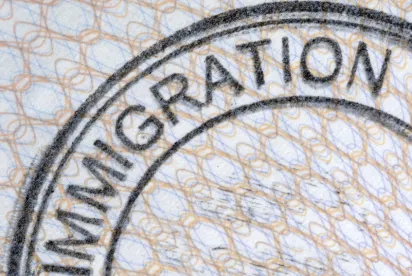The Basics of Immigrant Visa Availability
The Immigration and Nationality Act (INA) sets a limit on the number of immigrant visas (i.e. green cards) that may be issued to foreign nationals each year, and the U.S. Department of State (DOS) is the agency that allocates the aforementioned immigrant visas.
There are an unlimited number of immigrant visas available each year for “immediate relatives” of U.S. citizens. “Immediate Relatives” include spouses, unmarried children under the age of 21, parents of U.S. citizens at least 21 years old, and surviving spouses of U.S. citizens if the U.S. citizen spouse filed a petition before his or her death, or the surviving spouse files a petition within two years of the U.S. citizen’s death.
There are approximately 226,000 immigrant visas available each year in the family-sponsored preference categories; employment-based preference category immigrant visas are typically limited to 140,000 visas per year. However, these numbers may increase when immigrant visas from the previous fiscal year’s allotment are not used up. DOS further distributes based on preference category, country of chargeability (usually country of birth) and priority date.
Priority Dates
When the demand for immigrant visas exceeds the number of visas available, a waiting list for immigrant visa availability forms and the priority date is used to determine an individual’s place in the visa queue.
The priority date is located on a prospective immigrant’s Form I-797 Notice of Action for the relevant immigrant visa petition filed on their behalf. For most family-sponsored preference categories, the priority date is the date the Form I-130, Petition for Alien Relative is filed with USCIS. For employment-based preference categories that require a labor certification from the Department of Labor (DOL), the priority date is the date that the labor certification application is filed with the DOL, and the petitioner must file an I-140, Immigrant Petition for Alien Worker with USCIS within 180 days from the date the labor certification is approved. For employment-based preference categories that do not require a DOL labor certification, the priority date is the date the immigrant visa application is filed with USCIS for processing.
Only when a prospective immigrant’s priority date is earlier than the cut-off date shown for a given preference category and country of chargeability in the relevant chart of the monthly Visa Bulletin (also known as when the priority date is “current”) is a visa number available. When an individual’s priority date is current, he or she can take one of the final steps in the process of obtaining lawful permanent residence status in the U.S.
Sometimes, the visa cut-off date will move backwards or “retrogress” to an earlier date, and a priority date that is current one month will no longer be current the next month. This occurs when the number of people who apply for a visa in a given category exceeds the number of available immigrant visas that month.
Adjustment of Status Applications
Individuals present in the U.S. can file a Form I-485, Application to Register Permanent Residence of Adjust Status in connection with a family-sponsored or employment-based immigrant visa petition according to the monthly Visa Bulletin published by DOS. The monthly DOS Visa Bulletin indicates the availability of immigrant visas according to “Application Final Action Dates” and “Dates for Filing Applications.” Usually the “Application Final Action Dates” chart will determine when a prospective immigrant is eligible to file an adjustment of status application with USCIS.
When immigrant visas are currently available based on preference category, country of chargeability and priority date, a prospective immigrant can file his or her Form I-485 adjustment of status application concurrently with an underlying family-sponsored or employment-based immigrant petition.
As part of the adjustment of status application, an applicant must submit a Form I-693, Report of Medical Examination and Vaccination Record. However, the Form I-693 has limited validity and thus many applicants choose to wait to provide the Form I-693 until after receiving a Request for Evidence (RFE) or an immigrant visa interview to avoid having to repeat the immigration medical examination.
Along with a Form I-485 adjustment of status application, the applicant can also apply for a combination Employment Authorization Document (EAD)/Advance Parole card, which serves as a prospective immigrant’s work and travel authorization while the adjustment of status application is pending. This EAD/Advance Parole combo card is valid for one year but can be extended until the Form I-485 is processed.
Finally, a prospective immigrant can request to have a pending I-485 Application for Adjustment of Status transferred from one immigrant visa eligibility basis to another, as long as the applicant is the beneficiary of a pending or approved visa petition in the new preference category. In order to quality, the priority date must be current in the new category and for the prospective immigrant’s country of chargeability on the date the transfer is filed.
Pending Adjustment of Status Applications and AC21
Under Section 204(j) of the American Competitiveness in the Twenty-First Century Act (AC21), a prospective immigrant with employment-based Form I-485 pending for 180 days or more can seek to “port” to a new job in the same or similar occupational classification before final adjudication of the adjustment of status application.
Under AC21 Section 104(c), the beneficiary of an approved I-40 petition can extend his or her H-1B status beyond the six-year H-1B limitation if a he or she is eligible for lawful permanent resident status but a cannot currently file to adjust status due to lack of current availability of a visa number. To determine whether an individual is eligible for this benefit, USCIS relies on the “Application Final Action Dates” chart of the Visa Bulletin: if the priority date is on or after the cut-off date listed in the chart for the individual’s preference category and country of chargeability, then he or she may be eligible for an H-1B extension under AC21 Section 104(c).


 />i
/>i
